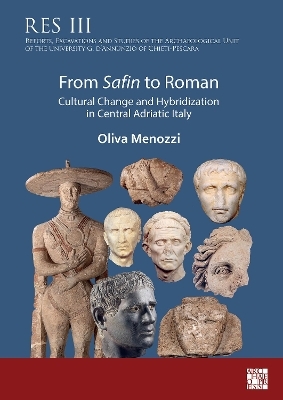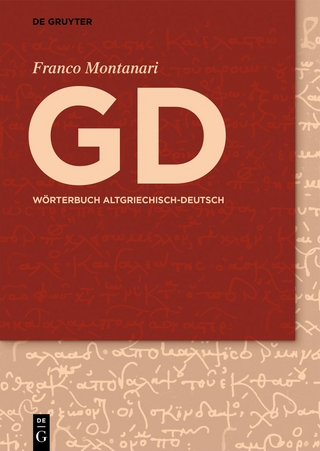
From Safin to Roman: Cultural Change and Hybridization in Central Adriatic Italy
Archaeopress Archaeology (Verlag)
978-1-80327-457-7 (ISBN)
From Safin to Roman investigates the Central Adriatic Apennines (roughly the modern region of Abruzzo), occupied in antiquity by Italic populations variously termed ‘Sabelli’, ‘Sabellics’ or ‘Sabellians’. For too long the region has been seen merely as a mountainous and isolated ‘terra di pastori’, sparsely populated with shepherds from prehistory to the late Hellenistic period, thus overestimating the role of the Romans in the organisation and exploitation of the landscape. The region in general has received little scholarly attention internationally compared with Tyrrhenian Italy, although the last three decades have been very rich in excavations and finds. The role of stock‑raising itself needs to be reinterpreted, because it changed greatly from period to period and certainly did not exclude other economical resources, already in early periods. The topography of the area and recent finds, show that agriculture was also important for the large sub‑Apennine and coastal areas, hilly but certainly not only mountainous, and that other resources were also important for the local economy, such as the exploitation of the forest and metallurgy. The monograph is complemented by appendices presenting the latest research and conclusions from a range of scholars working on the area.
Oliva Menozzi began her studies at Chieti University and completed her doctorate at Oxford in 2001. She has been Researcher and Lecturer in Classical Archaeology and Archaeology of Greek Colonization at the University G.d’Annunzio of Chieti‑Pescara (Italy) since 2002 and is now Associate Professor. She has been Director of the CAAM‑Centre of the Athenaeum for Archaeometry and Microanalysis since 2015 and of the Master STARch (Sciences and Technologies for Archaeology at risk) since 2019.
INTRODUCTION
Defining the Central Appenines
Hellenization and Romanization: problems of interpretation and Hybridization
Aims and methodologies of the research
THE LAND
Chapter 1. Historical Geography
Reading the ancient topography through the sources.
The infrastructure of ancient communications: road-network, tratturi and ports
Chapter 2. The Region: Geology and Landscape
Plates 1 – 32
THE MID-ADRIATIC APENNINES BETWEEN THE 6TH AND THE 4TH CENTURIES BC
Chapter 3. Ethnographic and Cultural Background between the 6th and 4th centuries BC
From the Safin to the Sabelli
The political situation
Language and script of Archaic Abruzzo
The Sabellians between the mid 5th and the mid 4th centuries BC
Trade and external contacts
Plates 33 - 64
Chapter 4. Settlement Structure
Territorial organisation
Hillforts
Villages
Sanctuaries
Chapter 5. Funerary Practices
Cemeteries
Funerary sculpture
Conclusions. The mid-Adriatic Apennines in the Archaic and Classical periods
Plates 65 – 96
THE CONVENTIONAL PERIOD OF ‘ROMANIZATION’
Chapter 6. The General Historical Background according to the Sources
Chapter 7. Society and Economy
The social context
Rural settlement and local production
Coins and currency
Plates 97 - 128
Chapter 8. Settlement Structure
Territorrial organization
Hillforts
Sanctuaries
Villages, vici and pagi
Colonies
Municipia and praefecturae
Chapter 9. Art and Architecture
Public and private architecture
Terracotta votive offerings
Votive bronze statuettes
Cemeteries and funerary equipment
Sculpture and portraits
Plates 129 - 160
PRELIMINARY CONCLUSIONS
ABBREVIATIONS
BIBLIOGRAPHY
APPENDICES
Appendix 1. Geoarcheologia, cambiamenti climatici e paesaggi archeologici in Abruzzo: un punto della situazione – Silvano Agostini
Appendix 2. Un aggiornamento sulle strutture abitative in Abruzzo – Vincenzo d’Ercole e Oliva Menozzi
Appendix 3. A diachronic overview of the S. Maria Cardetola necropolis in Crecchio (CH) (seasons 2015-2020, 2022) – Luca Cherstich
Appendix 4. Archeologia funeraria in Abruzzo: un aggiornamento – Vincenzo d’Ercole
Appendix 5. Preliminary data from the investigations in the municipality of San Giovanni Lipioni (CH): the archaeological areas of Colle Vernone and Il Monte – Eugenio Di Valerio
Appendix 6. Economia e organizzazione territoriale tra IV sec. a.C. e I d.C.: il ruolo dei ‘centri minori’ in area Centro-Adriatica e Appenninica – Maria Cristina Mancini e Oliva Menozzi
| Erscheinungsdatum | 18.05.2024 |
|---|---|
| Reihe/Serie | Reports, Excavations and Studies of the Archaeological Unit of the University G. d’Annunzio of Chieti-Pescara |
| Zusatzinfo | Illustrated in colour throughout |
| Verlagsort | Oxford |
| Sprache | englisch |
| Maße | 205 x 290 mm |
| Themenwelt | Geisteswissenschaften ► Archäologie |
| Geschichte ► Allgemeine Geschichte ► Altertum / Antike | |
| ISBN-10 | 1-80327-457-3 / 1803274573 |
| ISBN-13 | 978-1-80327-457-7 / 9781803274577 |
| Zustand | Neuware |
| Informationen gemäß Produktsicherheitsverordnung (GPSR) | |
| Haben Sie eine Frage zum Produkt? |
aus dem Bereich


